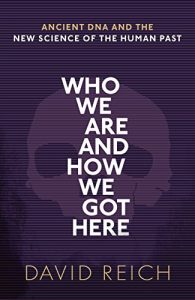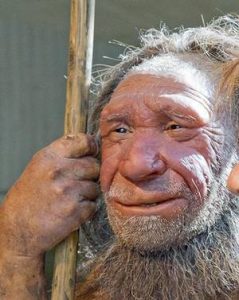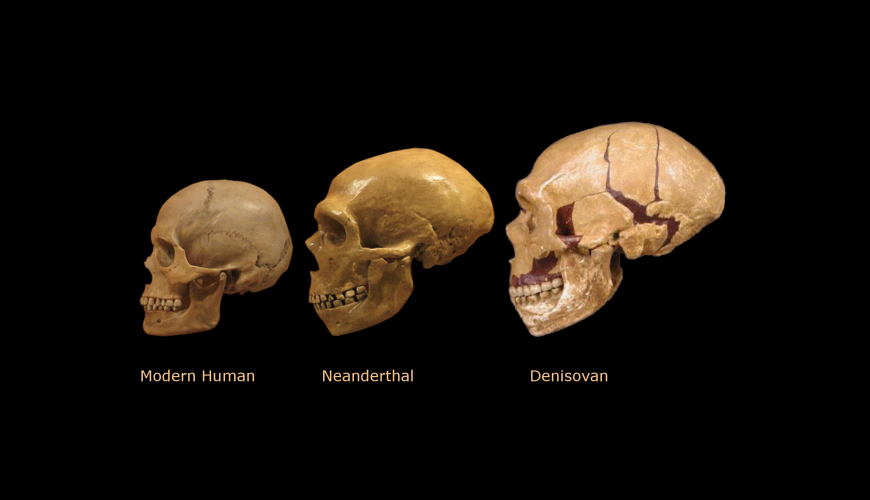David Reich’s new book Who We Are and How We Got Here (OUP March 2018) is a revelation. Reich is a professor in the department of genetics at the Harvard Medical School, and runs a specialised lab that focuses on ancient DNA as a tool to study ancient populations and human evolution. His book is a readable popular science account of the extraordinary advances in the understanding of human prehistory that have taken place in just the last half-decade, and the full-scale revolution that is about to take place.
 The techniques he describes are remarkable, involving what Elizabeth Kolbert has described as “reassembling a Manhattan telephone book from pages that have been put through a shredder, mixed with yesterday’s trash and left to rot in a landfill”. This is a long way from a simple cheek swab. Try disentangling 40,000 years of bacterial and fungal rot from a finger bone.
The techniques he describes are remarkable, involving what Elizabeth Kolbert has described as “reassembling a Manhattan telephone book from pages that have been put through a shredder, mixed with yesterday’s trash and left to rot in a landfill”. This is a long way from a simple cheek swab. Try disentangling 40,000 years of bacterial and fungal rot from a finger bone.
But Reich and his peers have mastered those techniques. The number of labs producing whole-genome ancient human DNA results is already growing rapidly and is set to grow exponentially over the next decade. The best analogy is one Reich makes himself, with radiocarbon dating. The ability it provided to accurately date any piece of organic material had a profound and continuing impact on archaeology, to the point where there are now more than 100 specialised radiocarbon dating labs in the world. As the number and location of ancient DNA results expands in a similar way, the prehistory of human population groups will come into focus ever more clearly.
Already, some of the findings he presents are startling. Western Europeans and Native North Americans share significant stretches of DNA, showing a relationship predating Columbus by thousands of years. Reich demonstrates unambiguously how both descend from the same ancestral population, dubbed “Ancient North Eurasians”, some of whom migrated across the Bering land bridge around 15,000 years ago, while others moved westward to contribute to European ancestry.
Even earlier, he uncovers clear evidence of our mixing with other variants of human, Neanderthal, Denisovan and undoubtedly many others, after we emerged from Africa around 70,000 years ago. All present-day non-Africans carry some of their genes. Evidently, we interbred with and exterminated them on our way to planetary dominance.
A bottle-neck Y-chromosome event sounds like a euphemism for a bar- fight. Reich describes these as recurring mass reproductions, where a single male and his offspring have vastly more descendants than their contemporaries. Examples in historic times would include the large numbers descended from an individual in fifth century Ireland, speculated to be Niall of the Nine Hostages, or the vast numbers across the thirteenth-century Mongol Empire bearing genes derived from another individual, speculated to have been Genghis Khan. These “Star-clusters” as they are known, happen again and again in prehistory. Though the mighty warlords’ memories have vanished, bits of their Y-chromosomes live on.
fight. Reich describes these as recurring mass reproductions, where a single male and his offspring have vastly more descendants than their contemporaries. Examples in historic times would include the large numbers descended from an individual in fifth century Ireland, speculated to be Niall of the Nine Hostages, or the vast numbers across the thirteenth-century Mongol Empire bearing genes derived from another individual, speculated to have been Genghis Khan. These “Star-clusters” as they are known, happen again and again in prehistory. Though the mighty warlords’ memories have vanished, bits of their Y-chromosomes live on.
One aspect of Reich’s work rightly worries him. “Race” has been a sore topic in science for decades, and for good reason. Scientists have been enthusiastic enablers of some of the worst atrocities carried out in the name of racial purity. A denial of the significance of race or anything resembling is now obligatory in the social sciences.
The good news is that Reich buries the notion of racial purity six feet under and dances on its grave. Every ancient genome shows intense and repeated mixing of populations. “Whites”, for example. descend from a mixture of four ancient populations that lived 10,000 years ago, each as different from one another as Europeans and East Asians today. We are all mutts, to the Nth degree.
The bad news is that as DNA testing becomes ubiquitous it will simply no longer be possible to ignore average genetic differences between distinct populations. Jews have won over 200 Nobel Prizes, more than 20% of the total, despite making up less than 2% of the world’s population. Athletes of West African ancestry hold 95% of the top times in sprinting. Roll a barrel of beer into a roomful of Irishmen and 98% are guaranteed to start singing.
This is nothing like racism, any more than saying that men and women are different is sexism. People are different, groups of people are different and the important question is what we choose to do about that difference. Celebrate (and sing about) it, maybe?

Read more, John. Other recent research indicates that distinct Neanders disappeared because of intermarriage and climate change in the areas in which they lived. So the myth of modern man wiping them out has been discounted. Much of written history will have to be reconsidered.
All very, very interesting. Just curious but a question please. What are the four ancient populations that lived 10,000 years ago, ancestors of today’s ‘whites’?
I’m paraphrasing from the book, chapter 5, page 104: the European farmers from around 9,000 years ago were a mixture of 1) the even more ancient European hunter-gatherers, 2) farmers from the Levant area (think present day Israel, Jordan, Syria, etc.); 3) Iranian farmers (present day Iran area) and 4) pastoralists/nomads from the steppe north of Black and Caspian Seas (think present-day Ukraine and Kazakhstan, and possibly east from there)
Great information to highlight out similarities.
Great article, but spoiled for me by the gratuitous stereotyping of “Roll a barrel of beer into a roomful of Irishmen and 98% are guaranteed to start singing.”. I’m pretty certain that this was a joke, and would have been great in conversation, but it doesn’t quite translate in text.
Thanks for alerting us to this very interesting book!!!
Ancient populations and human evolution are topics that hopefully will be introduced into school curriculums across the globe given the publications that are now available. I just wonder whether teachers are ready for this….children love dinosaurs! It will certainly make young people think about their family as genealogy is so popular among the Grandparent age group…..mine are always asking questions.